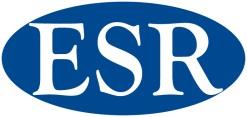 CORE FUND PROJECT - FINAL REPORT FOR 2014/15
Please complete and email to [email address] by Friday 29th August 2015.
CORE FUND PROJECT - FINAL REPORT FOR 2014/15
Please complete and email to [email address] by Friday 29th August 2015.
ESR is fully accountable for Core Funding. Information in this report
will be used to demonstrate what ESR Core Funding has been
invested in, and to quantify the benefit from the investment in e.g. the
Board Report. It will also inform future investment of Core Funding.
Project title:
Centre for Integrated Biowaste Research (CIBR)
Project leader(s): Dr Jacqui Horswell
Duration: until 2017
Budget (amount allocated per year and total spent) Allocated:
Spent:
CIBR: $1,626,877
CIBR: $1,626,667
Virus removal: $
297,813
Virus removal: $297,813
Total =$1,924,690
Total =$1,924,480
List the capabilities developed and by whom (include students)
CIBR core capabilities
• Microbiology
o Public and environmental health risk assessments.
o Assessments of waste processing technologies for microbial reduction.
o Generating environmental fate, transport and effects data for microbes.
o Developing novel culture and molecular methods for microbial (bacterial
and viral) identification and enumeration in wastes (wastewater, greywater
and biosolids).
• Ecotoxicology Team - Building an ecotoxicological platform that provides the
science to underpin risk assessments for contaminants found in biowastes:
o Chemical and biological assays to characterise the effects of micro-
pollutants;
o Risk assessment and management of emerging organic contaminants in
land applied biowastes, including the impacts of mixtures of contaminants;
o Environmental fate, transport and toxicity risk assessments for the
management of high priority chemicals.
• Cost benefit analysis (CBA)
o Systematic process for calculating and comparing benefits and costs of a
project, for example, using it to assess the economics of biosolids reuse
1
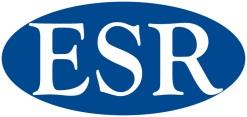
options.
• Soil science
o Assessing fit for purpose re-cycling/re-use of biowastes.
o How different waste treatment processes affect soil fertility and
productivity.
o Long-term field trials in a forest, glass house pot trials with native plants,
and laboratory studies.
o Use of biowastes in rehabilitating and restoring degraded soils - including
agricultural, urban and industrial.
• Forest ecology
o Impact of biowaste land application on forest biodiversity and functions.
o Identifying and manipulating ecological processes for improving forest use
of biowastes and minimising the environmental risks.
o Enhancing carbon sequestration in forests and soils through beneficial use
of biosolids.
o Best management practices for applying biosolids to forest plantations.
• Social science and cultural knowledge and approaches
o Community engagement methods including stakeholder analysis,
relationship building, in-depth interview and survey design, collaborative
planning hui, community dialogue workshop design and facilitation,
collaborative hui informed by Tikanga.
o ‘Fit for purpose’ community-engagement framework to support local
council decision-making.
o Sustainable behaviour change, new curriculum science education for
engaging teachers, students, whānau and households in addressing wicked
problems.
o Supporting iwi development, enterprise and waste management.
Capability development – students
[Withheld under section 9(2)(a) of the OIA]
[Withheld under section 9(2)(a) of the OIA]
[Withheld under section 9(2)(a) of the OIA]
[Withheld under section 9(2)(a) of the OIA]
[Withheld under section 9(2)(a) of the OIA]
[Withheld under section 9(2)(a) of the OIA]
[Withheld under section 9(2)(a) of the OIA]
[Withheld under section 9(2)(a) of the OIA]
[Withheld under section 9(2)(a) of the OIA]
[Withheld under section 9(2)(a) of the OIA]
[Withheld under section 9(2)(a) of the OIA]
[Withheld under section 9(2)(a) of the OIA]
[Withheld under section 9(2)(a) of the OIA]
[Withheld under section 9(2)(a) of the OIA]
2
 Students completed
Students completed
[Withheld under section 9(2)(a) of the OIA]
[Withheld under section 9(2)(a) of the OIA]
[Withheld under section 9(2)(a) of the OIA]
[Withheld under section 9(2)(a) of the OIA]
List the external research or grant proposals submitted (include $ value) and any
research funding obtained that have been made possible as a result of CF investment
in the project, include proposals awaiting funding decisions:
Grant proposals submitted
Funding body
Project title
Funding
Successful/declined/pending
requested
[Withheld under [Withheld under
[Withheld under pending
section
section 9(2)(b)(ii) section
9(2)(b)(ii) of the of the OIA]
9(2)(b)(ii) of the
OIA]
OIA]
[Withheld under [Withheld under
[Withheld under declined
section
section 9(2)(b)(ii) section
9(2)(b)(ii) of the of the OIA]
9(2)(b)(ii) of the
OIA]
OIA]
The Faculty
The occurrence,
$30k
successful
Research
fate, and
Development
ecotoxicity of
Fund,
pharmaceuticals
University of
and personal care
Auckland;
products in
wastewater
treatment plants
of Auckland;
[Withheld under [Withheld under
[Withheld under declined
section
section 9(2)(b)(ii) section
9(2)(b)(ii) of the of the OIA]
9(2)(b)(ii) of the
OIA]
OIA]
[Withheld under [Withheld under
[Withheld under declined
section
section 9(2)(b)(ii) section
9(2)(b)(ii) of the of the OIA]
9(2)(b)(ii) of the
OIA]
OIA]
3
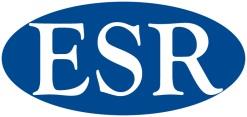 [Withheld under [Withheld under
[Withheld under
[Withheld under [Withheld under
[Withheld under declined
section
section 9(2)(b)(ii) section
9(2)(b)(ii) of the of the OIA]
9(2)(b)(ii) of the
OIA]
OIA]
KCDC Waste
Vermicomposting $40,000
successful
Levy Fund for
of Otaki biosolids
New
Technologies
and Seed
Funding
[Withheld under [Withheld under
[Withheld under pending
section
section 9(2)(b)(ii) section
9(2)(b)(ii) of the of the OIA]
9(2)(b)(ii) of the
OIA]
OIA]
[Withheld under [Withheld under
[Withheld under declined
section
section 9(2)(b)(ii) section
9(2)(b)(ii) of the of the OIA]
9(2)(b)(ii) of the
OIA]
OIA]
[Withheld under [Withheld under
[Withheld under declined
section
section 9(2)(b)(ii) section
9(2)(b)(ii) of the of the OIA]
9(2)(b)(ii) of the
OIA]
OIA]
[Withheld under [Withheld under
[Withheld under pending
section
section 9(2)(b)(ii) section
9(2)(b)(ii) of the of the OIA]
9(2)(b)(ii) of the
OIA]
OIA]
List all external research revenue obtained seeded by this CF project:
Co-funding and subcontracting
Funding type
Organisation name
Amount
[Withheld under section 9(2)(b)(ii) of the OIA] [Withheld under
Co-funding*
section 9(2)(b)(ii) of
the OIA]
Co-funding*
[Withheld under section 9(2)(b)(ii) of the OIA] [Withheld under
section 9(2)(b)(ii) of
the OIA]
Co-funding*
[Withheld under section 9(2)(b)(ii) of the OIA] [Withheld under
section 9(2)(b)(ii) of
the OIA]
4
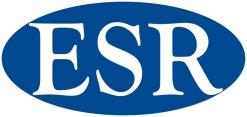
Co-funding*
[Withheld under section 9(2)(b)(ii) of the OIA] [Withheld under
section 9(2)(b)(ii) of
the OIA]
Co-funding
[Withheld under section 9(2)(b)(ii) of the OIA] [Withheld under
section 9(2)(b)(ii) of
the OIA]
Co-funding
[Withheld under section 9(2)(b)(ii) of the OIA] [Withheld under
section 9(2)(b)(ii) of
the OIA]
Sub-contract*
[Withheld under section 9(2)(b)(ii) of the OIA] [Withheld under
section 9(2)(b)(ii) of
the OIA]
Sub-contract*
[Withheld under section 9(2)(b)(ii) of the OIA] [Withheld under
section 9(2)(b)(ii) of
the OIA]
Co-funding*
[Withheld under section 9(2)(b)(ii) of the OIA] [Withheld under
section 9(2)(b)(ii) of
the OIA]
Show commercial benefits from the investment, list any new products or services
made possible by CF, both actual and potential (be realistic, not far fetched) and
estimate revenue, clients and timeframe for achieving this:
[Withheld under section 9(2)(b)(ii) of the OIA]
• .
Awards for science achievement
• Gerty Gielen was awarded Best Technical Paper’ for her paper: “Seasonal effects
on catchment scale nutrient removal in the Rotorua land application system” at the
New Zealand Land Treatment Collective Annual Conference 25-27 March 2015,
Wanaka.
• Jacqui Horswell was presented with an award “In recognition of her outstanding
services to the New Zealand Land Treatment Collective” at the New Zealand Land
Treatment Collective Annual Conference 25-27 March 2015, Wanaka.
• Jacqui Horswell was awarded the ESR Science Award for her work in biowaste
research and leadership on improving the Centre for Integrated Biowaste Research
(CIBR).
• The CIBR team was awarded ‘Highly Commended’ in the ESR Science Awards
for their work to improve the safety of fresh water and ground water resources for
human use and the safer use of biowastes
How does your research contribute to ESR’s IMPACT/s?
5
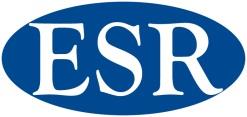
The CIBR programme contributes specifically to
Outcome 4 “Improve the safety of
freshwater and groundwater resources for human use and the safer use of biowastes”
Our work contributes to the ESR impacts:
► faster detection of and response to hazards
CIBR has extensive expertise in the detection of biological and chemical contaminants in
waste – this is an incredibly difficult medium to work in and often traditional techniques
are not applicable to this complex waste stream. Our extensive emerging organic
chemical analysis capability coupled with our ecotoxicology platform allows us to
characterise the range of contaminants commonly detected in biowastes including
mixtures of chemicals. Our experience in isolating microbiological contaminants allows
us to reliably detect and enumerate bacteria and viruses present in wastewater and solid
wastes. Using these techniques we can improve knowledge on the effectiveness of waste
treatment and use this enhanced knowledge to improve the effectiveness of treatment of
waste for the future. We are developing methods to detect and identify pharmaceuticals,
and enzymes present in wastewater, which will have a direct use for response to
contamination in the environment in the future.
► improved water management practice from the perspective of the human use of water
and public health impacts
Increasing knowledge of viruses present in wastewater and methods to enhance their
removal offers improved management practices for public health impact mitigation.
Improving the removal of viruses from the wastewater will reduce the risk of human use
of water in environmental waters impacted by wastewater. Public health impacts will be
improved by reducing the risk of virus contact in the environment both directly and
indirectly.
► improved understanding of contaminant pathways in water systems, and the impacts of
biowaste practices on waterways
In solid wastes we have characterised chemical and microbial levels and collected fate,
transport and effects data. We have increased our understanding about the new emerging
chemicals of concern in waste and how they interact as mixtures. We have found that
compounds such as triclosan (an antimicrobial used in hand soaps and toothpastes) can
cause ecotoxicological impacts in the environment and when mixed with heavy metals can
increase the toxicity of both. The Ecotox team have found significant residual toxicity
exists in mine sites rehabilitated with large amounts of biosolids, this may impact future
rehabilitation plans of contaminated land. The team at Lincoln University has continued
working on mitigating the environmental contamination risks associated with biowastes
by using them to promote the growth of NZ native vegetation in degraded environments.
Research has shown the strategic use of biowaste mixtures, such as biosolids and
woodwaste, as well as plants can influence the nitrogen cycle and protect waterways.
Our research also adds to the understanding of the levels and occurrence of viruses in the
environment from waste pathways (biosolids, greywater and wastewater) into waterways.
6
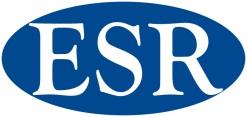
► support for effective regulation, standards and monitoring.
CIBR continues to provide the science that underpins the development of national
guidelines and is jointly leading a review of the NZ Biosolids Guidelines. Programme
leader Jacqui Horswell is a member of the steering group and CIBR team members
(Tremblay, Gielen, Northcott, Horswell, Robinson and Esperschuetz) wrote gap analysis
reports and literature reviews on aspects of the biosolids guidelines that need to be
reviewed. Jacqui Horswell also represents the Australia/NZ Biosolids partnership on the
new international ISO standard for biosolids application to land. CIBR has written the
suggested section on community engagement for this international standard.
CIBR also continues to provide advice for resource consent applications and district
planning, with respect to land application of wastes and has recently become involved in
Gisborne District Council’s planning and design of wetlands and sludge drying beds.
Only by increasing our knowledge of virus levels in wastewater and the effluent from
wastewater treatment will we be able to support effective regulation, standards and
monitoring. Our research is adding to this knowledge base by increasing our
understanding of the survival of viruses and their removal by wastewater treatment
systems.
CIBR team members sit on national and international advisory groups, boards and
Steering Committees (e.g. Australia/New Zealand Biosolids Partnership; NZ Land
Treatment Collective; BRANZ).
List anything else that can demonstrate value from this CF investment:
Science Quality:
Indicator
Number
Peer-reviewed journal articles accepted for science
9
publication
Masters or doctorate theses
1
Published conference proceedings
13
Keynote presentations
1
Commissioned Reports:
5
Workshop/hui
4
Number of non peer reviewed published articles
3
7
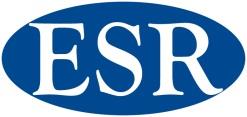 Please attach a copy of your final full year financial report with commentary. Feel free to ask a Management Accountant (Mary/ Carol/
Please attach a copy of your final full year financial report with commentary. Feel free to ask a Management Accountant (Mary/ Carol/
Kelvin) for help with this, if needed.
Commentary on budget:
CIBR – overall expenditure was on target.
Training and conferences was under budget due to [Withheld under section 9(2)(a)
of the OIA to protect privacy]. The overseas travel was under budget due to there
being no ANZBP meeting this year in Australia, and no attendance at an overseas
conference.
Local travel was higher than budget due to trips to Gisborne to set-up the new
Gisborne project.
Total labour costs were on target with 102% used, there was some variance in who
used hours.
CIBR 30 June 2015
YTD
Total
%
Profit and Loss
Actual
Variance
Plan
Used
Commitmts
Commercial Domestic
46,201-
46,201
CRI Capability Fund
1,626,667-
5- 1,626,672-
100
External Income
1,672,868-
46,196 1,626,672-
103
Grants/Scholarships
Fringe Benefit Tax
49
49-
Contract Personnel
Training/Conferences
1,709
3,291
5,000
34
Other Staff Expenses
1,153
847
2,000
58
Cap Cost (Manual)
Material/Consumables
17,303
2,508-
14,795
117
Equipmnt Maintenance
2,287
713
3,000
76
Equipment Hire
Sub Contracted Work
1,070,072
940 1,071,012
100
Freight & Courier
4,074
3,574-
500
815
Postage
122
378
500
24
Tolls/Local/Fax
35
35-
Maintenance IT
122
122-
Software
Maintenance F&F
257
257-
Rental Other Equip
Vehicle Expenses
81
81-
Travel Local
7,471
1,471-
6,000
125
Travel Overseas
1,621
3,379
5,000
32
Travel Allowances
335
665
1,000
34
Advertising & PR
1,500
1,500
8

Donations/Sponsorshi
Entertainment
18
18-
Entertainment Non De
18
18-
Information Supply
General Expenses
981
2,019
3,000
33
Printing/Stationery
1,621
121-
1,500
108
Memberships etc
687
687-
Legal Fees
Consulting Fees
External Expense
1,110,016
4,791 1,114,807
100
Labour Bands
143,332
3,095-
140,237
102
Corp O/head Alloc
243,200
243,200-
Program O/head Alloc
141,268
141,268-
Alloc RC O/h Prog
2,155-
2,155
EH GM O/head Alloc
19,745
19,745-
Internal Cost
1,074
1,074-
Internal Expenses
546,464
406,227-
140,237
390
Expenditure
1,656,481
401,437-
1,255,044
132
Margin
16,387-
355,241-
371,628-
4
LABAST LABAST
112
2-
110
MGTGEN MGTGEN
5
5-
SCNLDR SCNLDR
658
43
700
SCNTST SCNTST
557
535
1,092
SNRSCN SNRSCN
459
39-
420
SNRTEC SNRTEC
206
34
240
TECHN TECHN
1,549
829-
720
* Hours
3,546
264-
3,282
% Margin
1
22-
23
%Mgn ex Subcontracts
180
79-
260
% Consumables to Rev
1
0-
1
Band Multiplier
1
3-
4
Annual Rev per FTE
793
40-
833
9
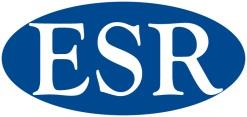 Commentary on budget:
Commentary on budget:
Virus removal – overall expenditure on track.
Training, conferences and travel were all under budget due to Louise Weaver
being on maternity leave.
Materials and consumables were generally on-track as was sub-contracted work.
Total labour costs were on target with 87% used, there was some variance in who
used hours.
Virus Removal 30 JUNE 2015
Profit and Loss
YTD Actual
Variance
Total Plan
% Used
CRI Capability Fund
297,813-
297,813-
100
External Income
297,813-
297,813-
100
Grants/Scholarships
5,000
5,000
Contract Personnel
Training/Conferences
326
3,674
4,000
8
Other Staff Expenses
471
471-
Material/Consumables
21,149
4,215
25,364
83
Equipmnt Maintenance
585
585-
Equipment Hire
Sub Contracted Work
85,332
1,668
87,000
98
Freight & Courier
414
174-
240
172
Postage
Tolls/Local/Fax
Maintenance IT
Software
Rental Other Equip
Vehicle Expenses
39
202
240
16
Building Services
Travel Local
754
246
1,000
75
Travel Overseas
2,500
2,500
Travel Allowances
Advertising & PR
Donations/Sponsorshi
Entertainment
600
600
Entertainment Non De
Information Supply
26
26-
General Expenses
340
340-
Printing/Stationery
200
200-
Memberships etc
10
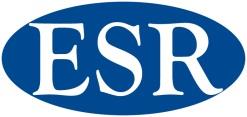
Legal Fees
Consulting Fees
External Expense
109,635
16,309
125,944
87
Labour Bands
30,983
16,105
47,088
66
Corp O/head Alloc
49,083
49,083-
Program O/head Alloc
21,231
21,231-
Alloc RC O/h Prog
22-
22
EH GM O/head Alloc
1,947
1,947-
Internal Expenses
103,222
56,134-
47,088
219
Expenditure
212,856
39,825-
173,032
123
Margin
84,957-
39,825-
124,781-
68
SCNLDR SCNLDR
12
12
SCNTST SCNTST
11
86
96
SNRSCN SNRSCN
185
111
296
SNRTEC SNRTEC
536
44
580
SSCNLR SSCNLR
1
1-
TECHN TECHN
12
148
160
* Hours
745
399
1,144
% Margin
29
13-
42
%Mgn ex Subcontracts
80
20-
100
% Consumables to Rev
7
1
9
Band Multiplier
4
0
4
Annual Rev per FTE
672
235
437
11
 Executive summary – Three to four sentences giving an overview of your project and
Executive summary – Three to four sentences giving an overview of your project and
the results obtained. This will be used for the board report so keep in mind that not
everyone is an expert in your field.
Four key achievements:
1.
Mitigating environmental impacts of waste: Land application of waste is a
growing trend in New Zealand with many localities investigating land
application as an alternative to ocean or river disposal. The CIBR team led
by Lincoln University have been researching the use of
antimicrobial/bioactive producing plants to reduce microbial and nitrogen
contamination from land applied wastes. In particular we are focusing on
protecting waterways from biowastes associated with dairy farming. Field
trials have been established on the former Eyrewell forest soils, in
collaboration with Prof. Nick Dickinson (dept of Ecology), to use NZ native
plants to mitigate the negative environmental effects of dairy shed effluent
while promoting the growth of honey and oil producing manuka and kanuka.
This research will directly aid the primary sector to face its greatest challenge
of increasing productivity without causing unacceptable harm to the
environment.
2.
CIBR capability on risk characterisation and management of emerging
contaminants: CIBR continues to develop capability in the risk
characterisation and management of emerging contaminants through the
production of reports, organisation and participation in workshops, and
continuing development of experimental capability. This expertise is
essential to NZ. For instance, Auckland Council, Greater Wellington
Regional Council and Environment Canterbury have all struggled to deal
with issues around the management of emerging contaminants issues. This is
the situation for many other councils across the country as there is an absence
of direction from central government. CIBR (Grant Northcott and Louis
Tremblay) are part of a small team of experts providing advice to councils
and recently co-authored a report reviewing the state of knowledge regarding
emerging contaminants and providing recommendations to councils on the
prioritisation and selection of emerging contaminants to include in future
environmental monitoring programs. Grant and Louis also co-authored a
report for Watercare Services Limited summarising the current state of
knowledge of emerging contaminants with an emphasis on the risk they pose
to environments where wastewater treatment plant effluent is irrigated to
land. The CIBR team were invited speakers at the EPA Tikanga and
Technology workshop in Wellington where current research on emerging
organic contaminants was reviewed and discussed by attending Maori
delegates. The Ecotox team are organising the prestigious Society of
Environmental Toxicology and Chemistry (SETAC) Australasia conference
in August 2015 where CIBR research will be showcased in a conference
12
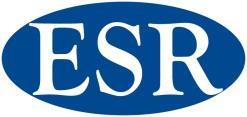
workshop. As part of the conference CIBR is coordinating the Australasian
response to the Global Horizon Scanning Research Prioritisation Project.
This SETAC initiative will prioritise the most important future research
questions as recognized by scientists from around the globe working in
government, academia and business. This exercise also identifies key
research capability around the globe and future opportunities to participate in
international collaborative research programs.
3.
Up the Pipe solutions – The CIBR team have continued to develop the science
outreach component of the programme. Using the resources developed under
the Ministry for the Environment project ‘up the pipe-solutions’ the team
have visited 5 schools in the lower North Island and 2 schools in the Nelson
region. Although the grant proposals to secure funding for this work have
been unsuccessful, a small amount of core funding from ESR allowed us to
continue this important work. We have also taken part in Royal Society and
Regional Council career fairs and education festivals and have developed a
network of key stakeholder relationships in this area including New Zealand
Centre for Educational Research (NZCER), Enviroschools, EcoStore, Porirua
City Council and Gisborne District Council.
4.
Enhancing Pacific Island wastewater treatment: Research has begun to assist
Pacific Island communities to enhance their wastewater treatment using low
cost, sustainable approaches. As a first step we have carried out initial
assessment of the natural attenuation capacity of coral sand for bacterial and
viral contaminants. The research is providing a platform for future funding
opportunities in the Pacific through MFAT and other government agencies.
We have presented the findings to Pacific government agencies and have
published a journal article on the initial results. Feedback from the Pacific
agencies is very positive and there is a good chance of us achieving future
funding in the sanitation area based on these initial studies
.
Project report – Make this a stand-alone final report suitable to include in a
consolidated report to the ESR Board. Include brief background, what you did, what you
found, conclusions (2-3 pages). This is the opportunity to tell a success story that ESR
can use in Briefing and other communications.
The CIBR is a virtual centre, combining the expertise of 8 New Zealand research
institutes, universities and research partners dedicated to developing both the biophysical
and social science behind appropriate and sustainable beneficial reuse of organic,
biodegradable solid and liquid waste such as sewage effluent and sewage sludge, grey
water, industrial and agricultural waste; kitchen/food waste; and green waste. Led by
ESR, CIBR brings together a multi-disciplinary team of scientists and researchers from
ESR, Scion, Cawthron Institute, Landcare Research, Lincoln University, NIWA, Lowe
Environmental Impact, Northcott Research Consultants Ltd. and Kukupa Research.
CIBR science
13

We combine the expertise of our four specialised research groups (Social and Cultural
Research, Soil Science, Microbiology and Ecotoxicology) to connect communities,
regulators and industry with the science of organic waste management.
The social/cultural group have developed the CIBR “Community engagement framework
for biowastes” to support local government staff, engineers and consultants in the
biowaste and wastewater sector in guiding their endeavours to engage and consult with
the community. Engagement with the community in Christchurch, Kaikōura, Mokai,
Little River and Porirua undertaken by the team has laid the foundation to developing this
framework and external review has assisted in tailoring it for end-users. The framework
is underpinned by the social/cultural science recently published in a high ranking journal
(Futures) outlining the transdisciplinary approach the CIBR takes to waste management
in New Zealand and addresses interrelated challenges through indigenous partnership.
Following extensive community engagement with Māori, the social/cultural group have
developed a report on Tapu to Noa - Māori cultural views on biowastes management,
which is designed to support local government staff and engineers in better understanding
and incorporating Māori worldviews into biowaste management negotiations and
solutions.
The presence of micro-contaminants in waste has been described as one of the main
challenges facing humanity. Our extensive ecotoxicology platform uses a suite of
biological-based methods in model organisms ranging from the microbial level (e.g.
bacterial biosensors) to the macro fauna level (e.g. zebrafish and earthworms) to
characterise the risk of a range of contaminants commonly detected in biowastes such as
biosolids. We have developed a new assay to assess effects of contaminants on thyroid
function and recently took part in an international thyroid interassay comparison
organised by Waterways Research Institute in the Netherlands as part of an EU funded
project. The interassay comparison provides an assessment of the robustness and
applicability of the included assays to determining effects on thyroid function. We are
also working with international collaborators in China, as well as collaborators in New
Zealand using next generation molecular sequencing approaches to provide new
understanding of the effect of contaminants on earthworms that in turn can be used to
provide understanding of the mechanisms of effects in humans – in particular multi-
generational (epigenetic) effects.
The risk characterisation of micro-contaminants in biowastes is underpinned by the most
extensive chemical analysis capability available in New Zealand. This capability
continues to expand with new analytical methods under development for the analysis of
pharmaceuticals and polybrominated flame retardants in biosolids and biowastes. These
world leading innovations in chemical analysis and ecotoxicology allow us to provide
biowaste producers and regulators with a comprehensive risk assessment of the
environmental and public health impacts of waste water and solids. We are developing
partnerships with industry to investigate the use of system approach to establish novel
solutions. This requires working closely with CIBR colleagues and other organisations
14
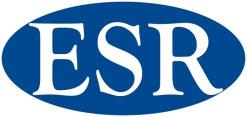
with complementary expertise like green chemistry that will assist New Zealanders
achieve their sustainability objectives.
Contaminants in biowastes are often present in complex mixtures that can act together to
increase toxicity (synergism). A key focus of our research is to understand the impacts of
mixtures of contaminants in biowastes on the environment. We have been investigating
how the mixtures of copper, zinc, and triclosan (antimicrobial used in bodycare products)
effects soil microbes and key indicator species (e.g. earthworms). We found that the
presence of co-contaminants in complex waste materials such as biosolids may combine
to produce synergistic or additive ecotoxicological impacts upon soil function and health
indicators. This work and other studies looking at triclosan in isolation have strongly
indicated that this chemical represents a high risk to the environment and should be
removed from products. CIBR research has provided evidence in a case put to the EPA
by the Green party to ban triclosan. As well as providing evidence to Government bodies
such as the EPA the CIBR team have also produced a user friendly pamphlet aimed at the
general public – providing information on chemicals of concern and more
environmentally friendly alternatives.
Contaminant mitigation is a focus of the research group at Lincoln University. Nutrient
loss from agricultural areas is a major source of pollution for freshwater and coastal
systems worldwide. Coupling the properties of plants as natural biofilters, with
additional bioactive producing capabilities may offer enhanced ecosystem protection
by inhibiting nitrification and enhancing pathogen-die off. Riparian strips are commonly
used in farming systems to take up nitrogen and phosphorus as they grow. However
nitrate is able to elude the roots and travel through groundwater directly into the
waterway. Combinations of glasshouse and field scale experimental blocks are
demonstrating that the incorporation of native plants into agricultural landscapes can
reduce the impact of land application of waste and produce valuable native products such
as essential oils and honey.
Our long-term field trial on Rabbit Island is unique both nationally and internationally
due to the comprehensive and long-term assessment. A key focus of our research is to
investigate the sustainability of long-term land application of biosolids in plantation
forests through assessing the ecological and environmental impact on the pine plantation
ecosystem. Biosolids from Nelson wastewater treatment plant have been applied every
three years to a radiata pine forest on Rabbit Island since 1997. Tree nutrition, growth,
wood properties, soil and groundwater quality have been monitored over the period of 19
years. The research findings from this long-term forest field trial have supported and
informed management practices for sustainable land application of biosolids, and
provided direct evidence for waste managers/land owners in Nelson in particular and
other regions in general to make informed decisions during the resource consent
application process. This long-term trial has demonstrated the sustainability of land
application of biosolids and its economic outcomes, resulting in improved soil fertility,
stand productivity (by 26%) and carbon sequestration in the forest and soil. In
conclusion, long-term land application of biosolids has transformed the forest site from
15

relatively low to moderately high productivity without causing significant adverse effect
on the environment.
Recently Louise Weaver’s ORI Virus Removal programme, another legacy programme,
has joined CIBR bringing key collaborator NIWA to the team. The virus removal team’s
research aims to establish a more complete view of virus removal in waste stabilisation
ponds, a common and sustainable treatment of wastewater in New Zealand and overseas.
The team have found that there are more virus removal mechanisms in these systems than
was first thought, including attachment and settlement, protozoan grazing, and biological
enzyme activities. This knowledge will help underpin development of pond modelling,
improved design information and capability reducing the inherent risks associated with
the uptake and application of this technology.
The Virus removal team is also actively undertaking research in the Pacific, an expanding
area for ESR. As low cost, sustainable solutions to waste management in the Pacific we
have conducted experiments investigating the natural attenuation potential for coral
sands. Results have so far shown that coral sand has the potential for indicator (
E. coli,
enterococci and MS2 bacteriophage) retention. We are now moving to investigate the
removal potential of viral pathogens in coral sands.
A major focus for the CIBR team this year has been the development of new biowastes
guidelines. In partnership with WaterNZ, WasteMinz and the Land Treatment
Collective, CIBR scientists have been driving the long overdue update of the 2003
national biosolids guidelines. The new guideline will be broadened to encompass all
organic or ‘bio’ waste with a beneficial re-use potential in an effort to enhance
sustainable biowaste reuse. CIBR have been providing the science underpinning the new
guidelines, a significant pathway to uptake of our research.
Capability development is a key focus of CIBR with 19 postgraduate students and
postdoctoral fellows involved with the programme. To further encourage capability
development and innovation in the programme CIBR has established the “Project
Incubator Fund”. The fund supports new ideas and initiatives that have the potential to
lead on to the development of larger research proposals. This year grants were awarded to
Gerty Gielen and Grant Northcott to “Development of a robust extraction procedure for
acidic pharmaceuticals from sewage sludge and biosolids” and to Brett Robinson and
Saloomeh Seyedalikhani to investigate “NZ native vegetation to improve the quality of
biosolids-amended soils, while producing essential oils”.
16















